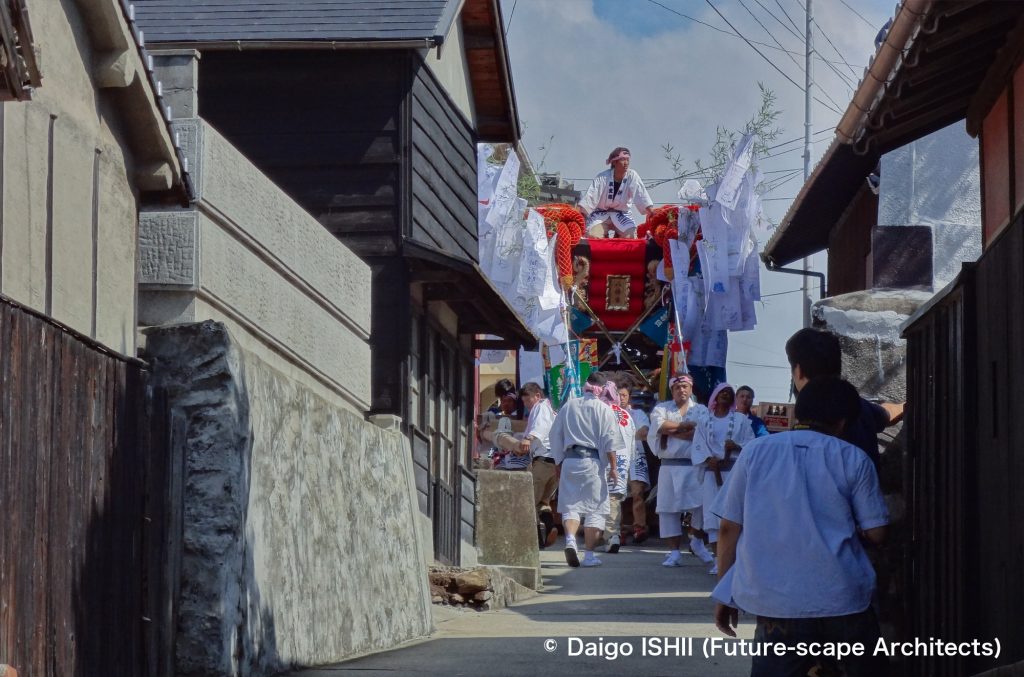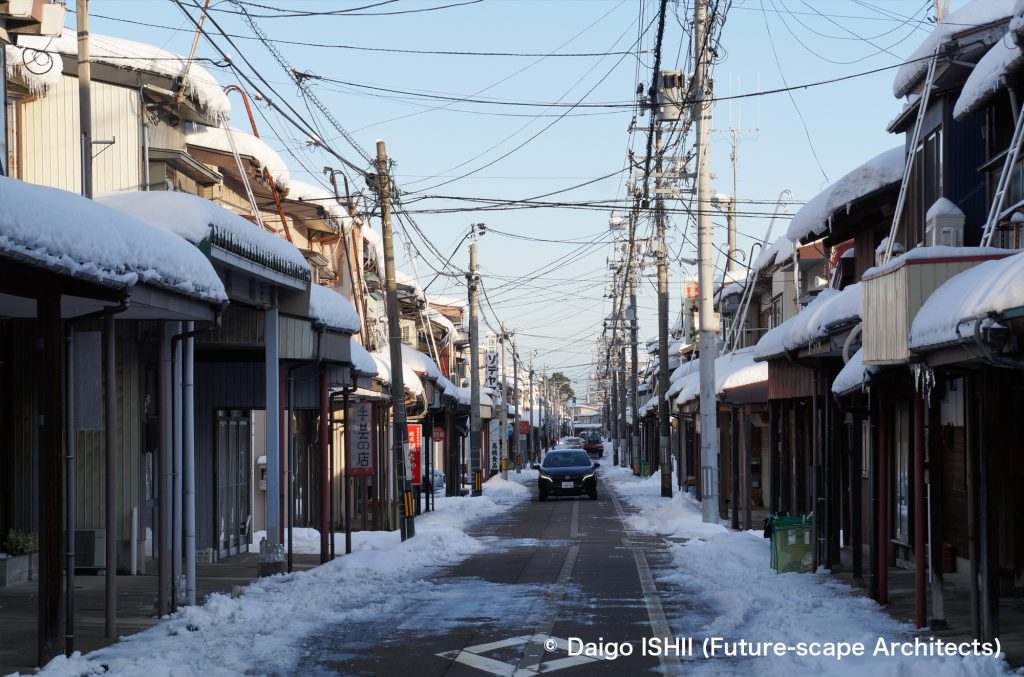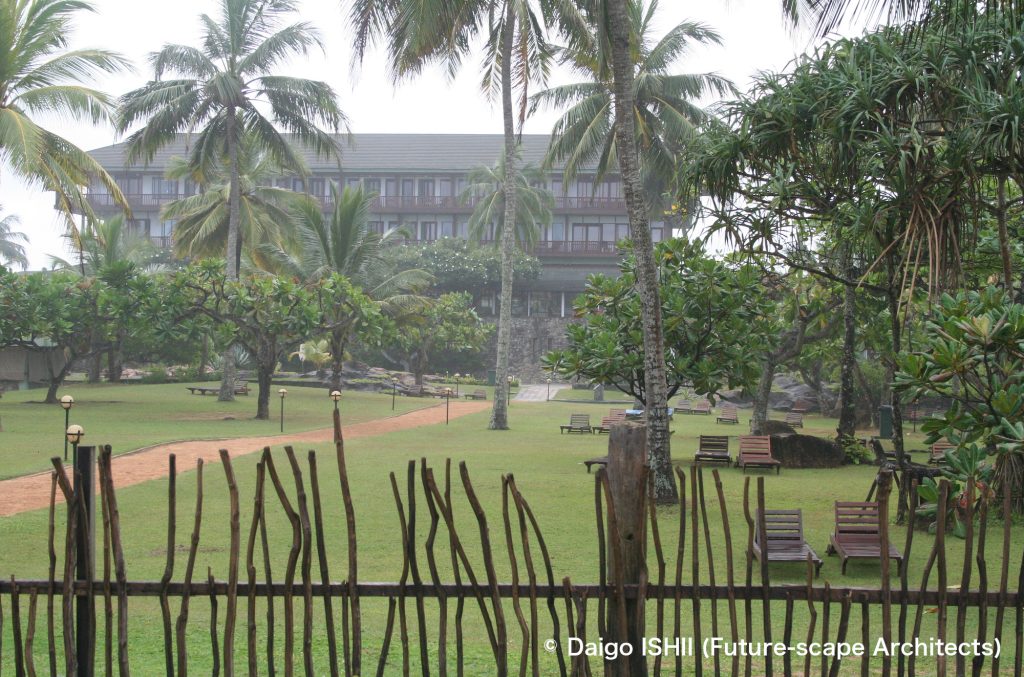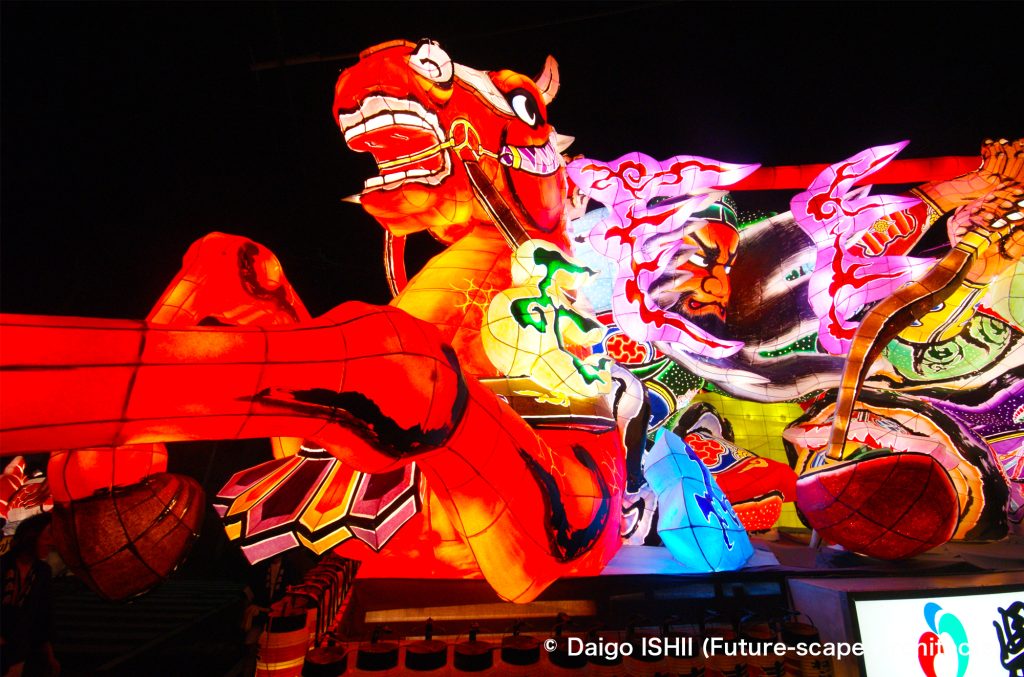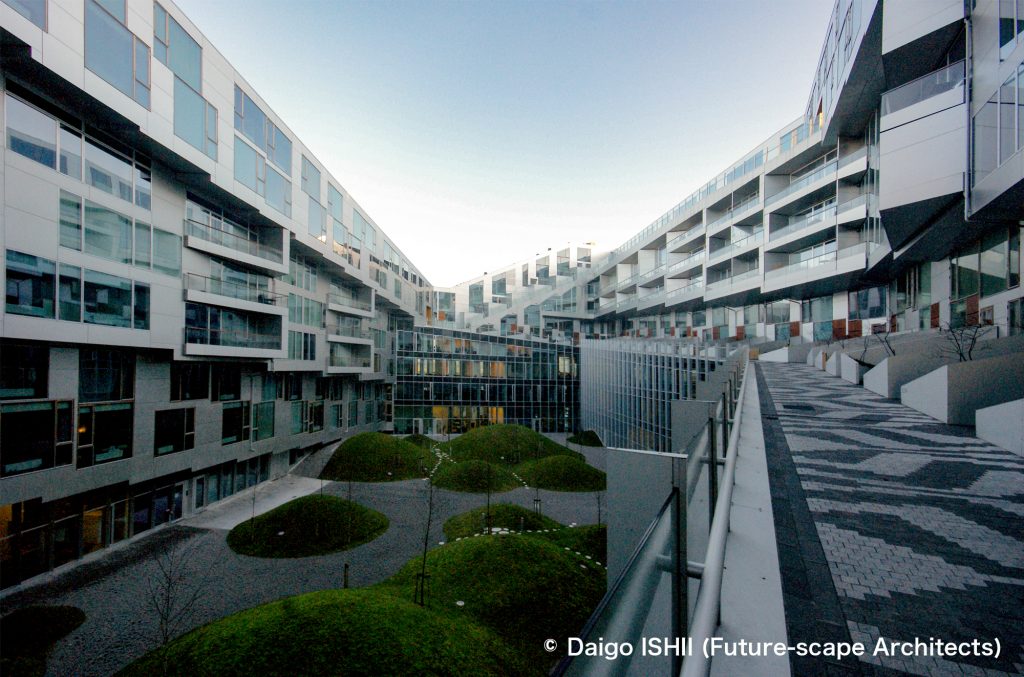漁業の恵みで4000超の人が暮らしていた伊吹島でしたが、実は、住むことに問題のある島でした。それは飲み水が手に入らなかったこと。
More than 4,000 people lived on Ibukijima island according to a blessing from the fishing industry. However, the island had a problem living on. It was the lack of drinking water.
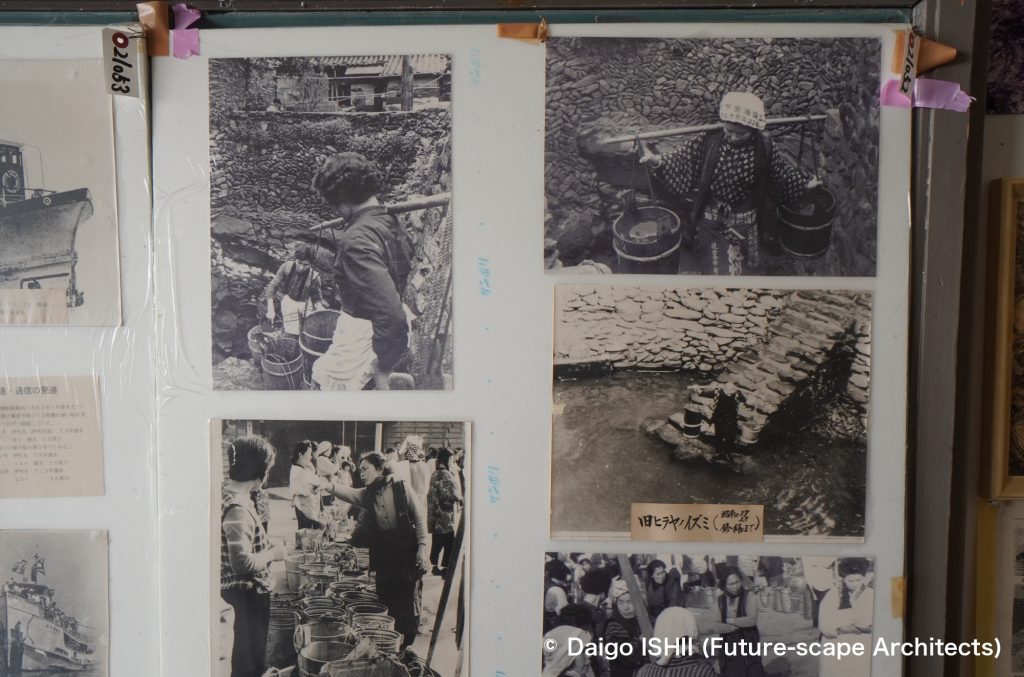
See the photos exhibited in Ibukijima Island Folk Museum. Those show the communal rainwater wells (the Hirai Well and the Spring of Zenne) in the time when islanders lived with rainwater. It was a stone well with stairs, and they went down to the depth where the water remained to draw water.
https://goo.gl/maps/cRoEG37BwLFQgx596
輝石岩の岩盤の島で、それ故、阪神淡路大震災のときにも、被害の出た対岸の観音寺とは対照的に、ほとんど揺れなかったほど。しかし、岩盤故、雨が滲み込まず、すぐに海に流れ、天然の水が手に入りませんでした。水のない島でしたが、豊かな漁場がすぐ近くのため、ここで暮らすことを選んだのです。
その解決方法として、島が産み出したのが、岩を穿ってつくった雨水を溜める「天水井戸」。飲料水から生活用水まですべてに利用しました。
各家は、自分の家の屋根に降った雨を樋で拾い、小さな自家用の天水井戸(イズミ)に溜め、その一方、共同体で使用する大きな石積みの天水井戸(ムライド)をいくつもつくりました。しかし、地中から湧いた地下水ではなく、あくまでも貯めた雨水。昔の新聞には、「井戸には、ボウフラよけにコイを入れ、ガーゼでこして飲み水にした。」と書かれています。
集落の中央にあった平井の井戸は、今は、上部をコンクリートで塞いでいますが、1683年に、領主に嘆願して、人夫と道具の助成を受けてつくったもの。昔の写真では、マイマイ井戸のように、石積みの井戸に階段が付き、水の残っている深さまで下りて、水を汲んでいます。渇水期には、その水さえ尽き、船で運んで来た水を加えることもあったそうです。
上水道のインフラから切り離された島が、雨水に頼る生活から解放されたのは、1973年のことで、給水船が、1日2回本土から通うようになりました。ただし、必要な水を全部賄えた訳ではなく、水の苦労が完全に消えるのは、海底送水が始まる1984年まで待ちます。
水に恵まれた(と信じられている)日本にも、水の神話から取り残された人々が、少し前までいた訳です。驚くことに、島民の方とお話していたら、今でも雨水で生活している方がいました。
The island consists of pyroxene bedrock. So even during the Great Hanshin-Awaji Earthquake, it hardly shook, while the mainland on the opposite bank suffered damage. However, because of the bedrock, the rain did not percolate and immediately flowed into the sea, making it impossible to obtain natural water. Although it was an island without water, islanders chose to live here because of the proximity to rich fishing grounds.
In order to solve this problem, the island created "rainwater wells" that collect rainwater by drilling through rocks. They used it for everything from drinking water to daily life water.
Each family collected rainwater from their roofs with gutters and stored it in a small private rainwater well, while the island also built large masonry rainwater wells for communal use. However, it was not groundwater but rainwater that had been stored. An old newspaper wrote that carp was released into the well to prevent mosquito larvae, and the islanders filtered with gauze to use as drinking water.
The Hirai Well, which was located in the center of the village, is now covered with concrete. In old photos, it was a stone well with stairs, and they went down to the depth where the water remained to draw water. During a dry season when water ran out, they added the water transported by boat to the well.
In 1973, the island, which had been decoupled from the water supply infrastructure, was freed from its dependence on rainwater since a water supply boat began commuting from the mainland twice a day. However, it didn't supply all the necessary water. They had to wait until 1984, when submarine water pumping began, and the trouble with water completely disappeared.
Even in Japan, which is (believed to be) blessed with water, some people were left out of the myth of water until a short time ago. Surprisingly, when I recently talked with an islander, she still lived on rainwater.
ツクダのイズミ / Spring of Tsukuda
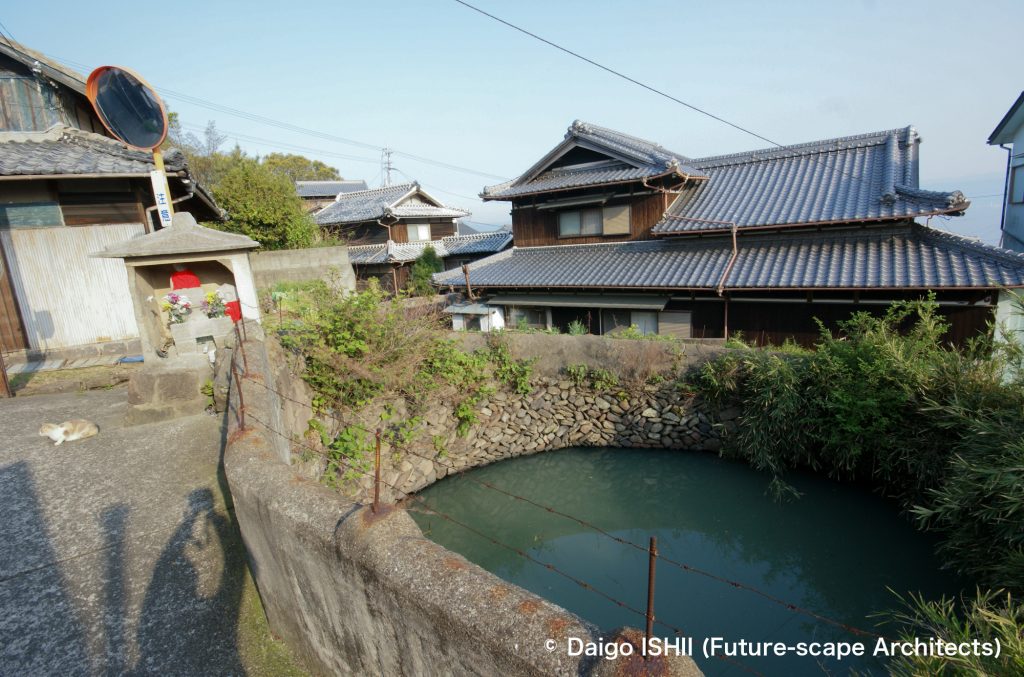
See the Spring of Tsukuda as one of the communal rainwater wells.
https://goo.gl/maps/EmV2S4WDomD67Q2Z6
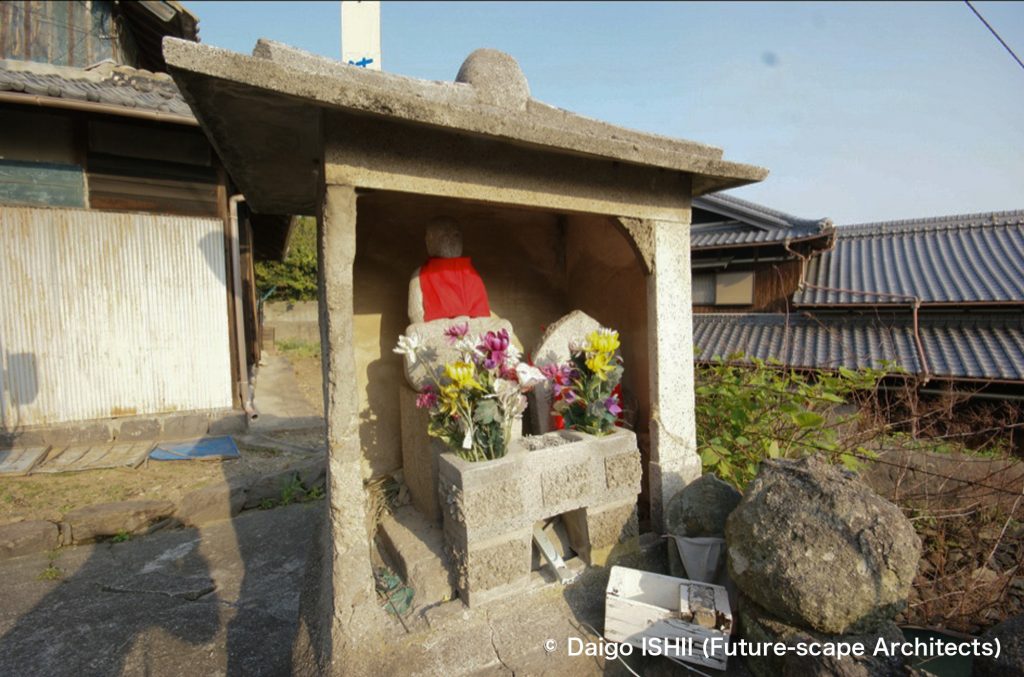
Most rainwater wells have a shrine dedicated to the deity of water. See the shrine in the Spring of Tsukuda.
https://goo.gl/maps/EmV2S4WDomD67Q2Z6
ゼンネのイズミ / Spring of Zenne
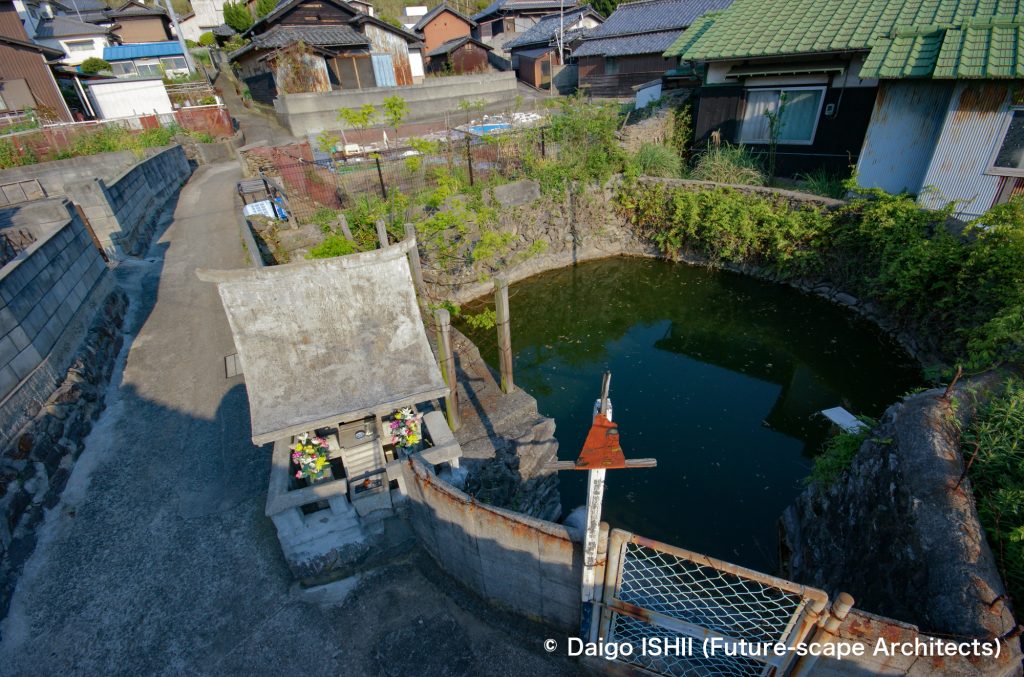
See the Spring of Zenne as one of the communal rainwater wells.
https://goo.gl/maps/Zn4baoiSJr8XNSMu6

The names of the islanders who contributed to the construction of the well are engraved on the wall surrounding the Spring of Zenne as one of the communal rainwater wells.
https://goo.gl/maps/Zn4baoiSJr8XNSMu6
平井の井戸 / Hirai Well
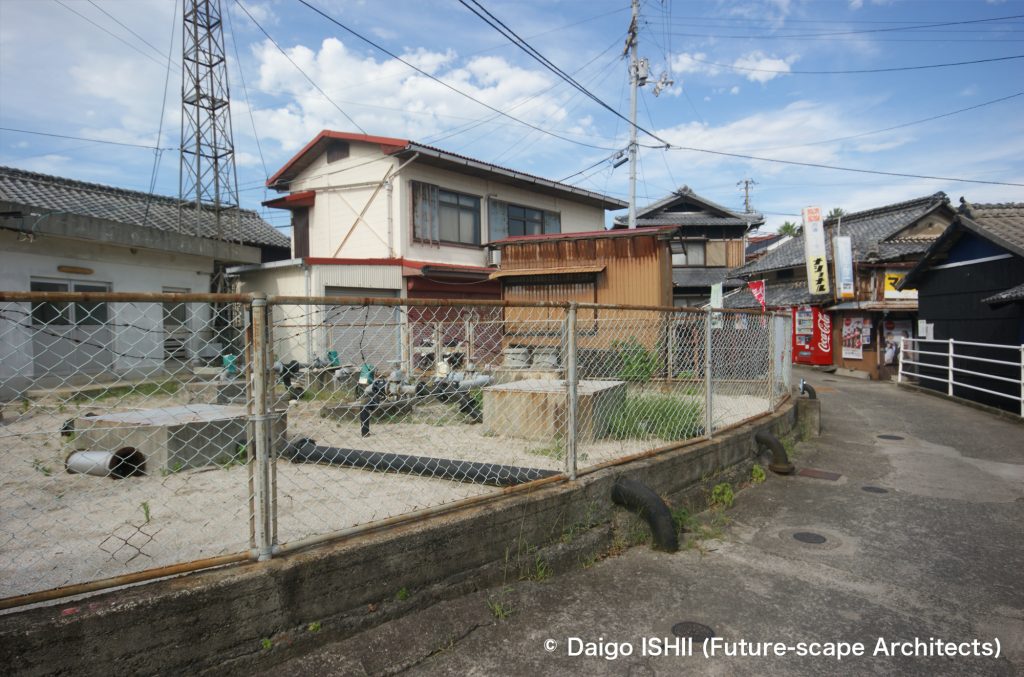
The Hirai Well, which was once the largest among the communal rainwater wells, is now covered with concrete. After submarine water supply started, it was used for a long time as a relay tank for tap water.
https://goo.gl/maps/cHYS2wZq3qUr8khSA
さまざまな天水井戸 / Various rainwater wells

See a rainwater well established in the courtyard of the fishermen's boss residence.
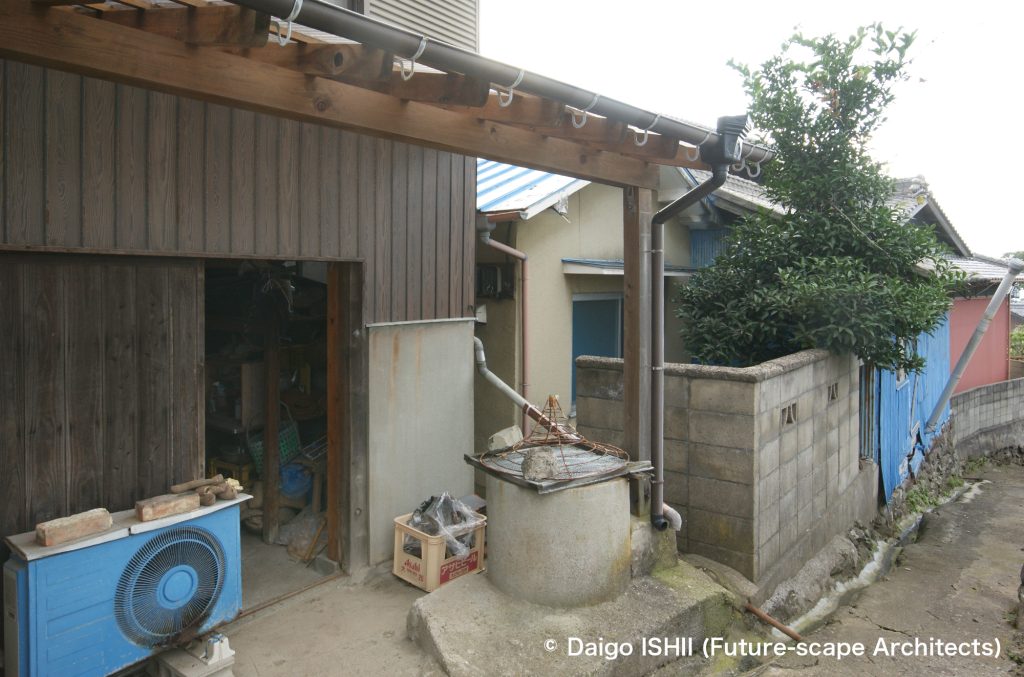
See a rainwater well established in a private house. A rain gutter extends into the rainwater well.
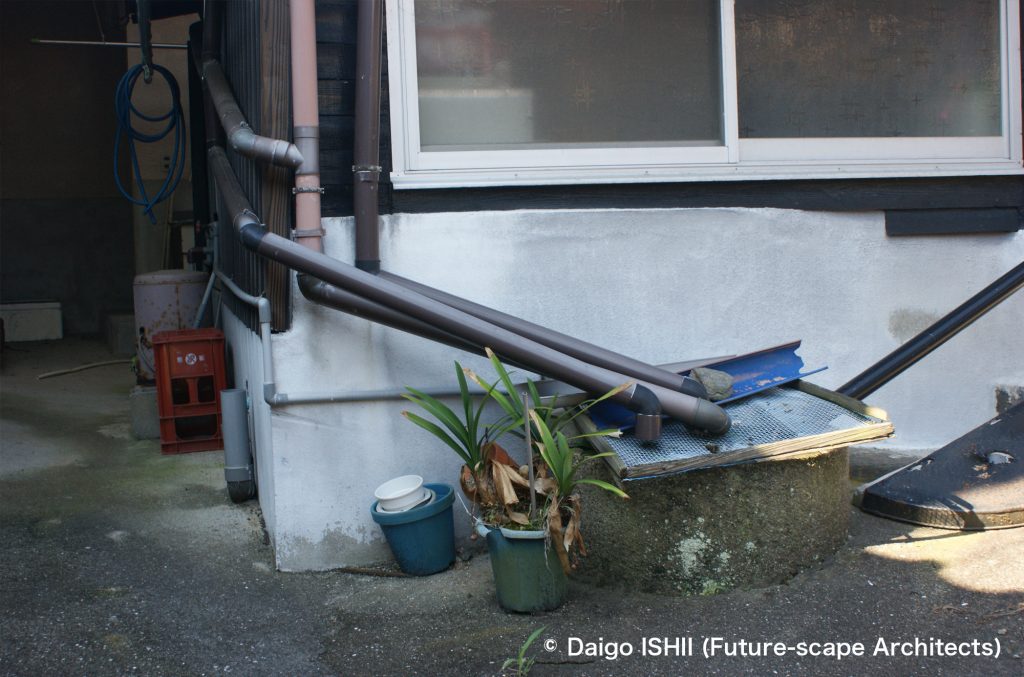
Se a rainwater well established in a private house. A rain gutter extends into the rainwater well.
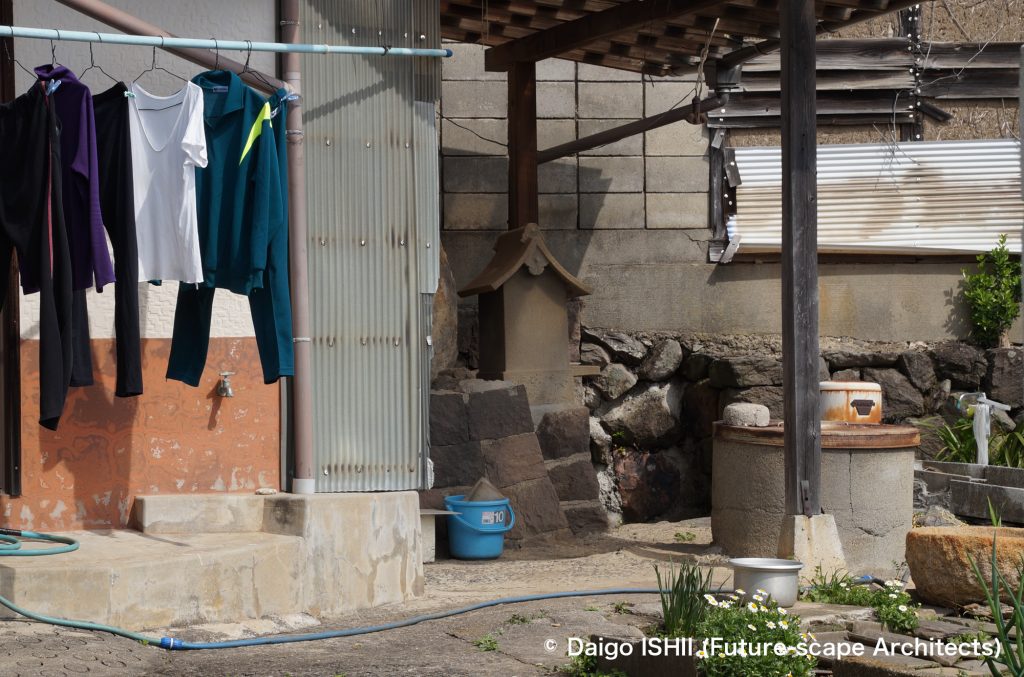
See a rainwater well established in a private house. On the right hand is a rainwater well, and in the center is a shrine dedicated to the deity of water.

See a rainwater well established in a private house. A shrine dedicated to the deity of water was established along the block fence, and a rainwater well covered with steel plate remains between the fence and the house.
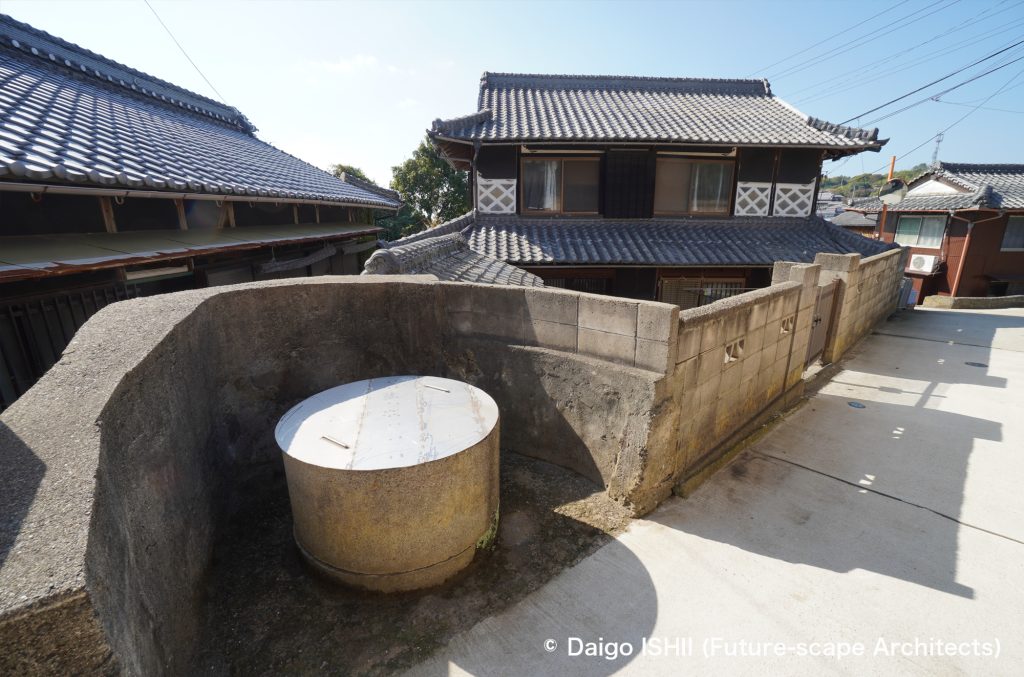
See a rainwater well located by an alley. It is assumed that the residents of the area used it jointly.
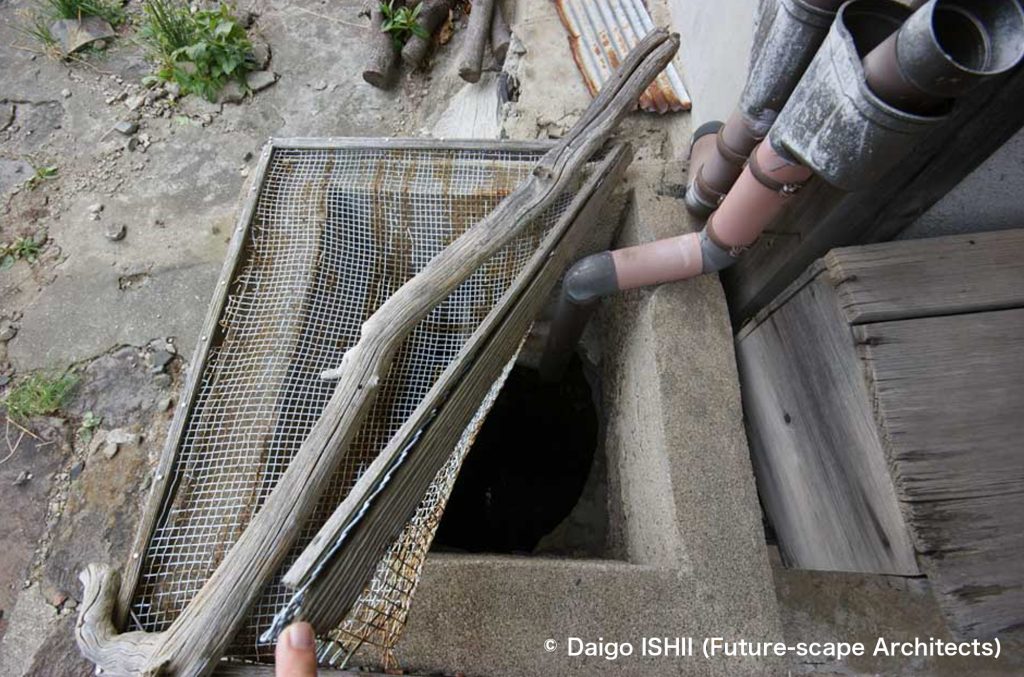
Se a rainwater well established in a private house. A rain gutter extends into the rainwater well.
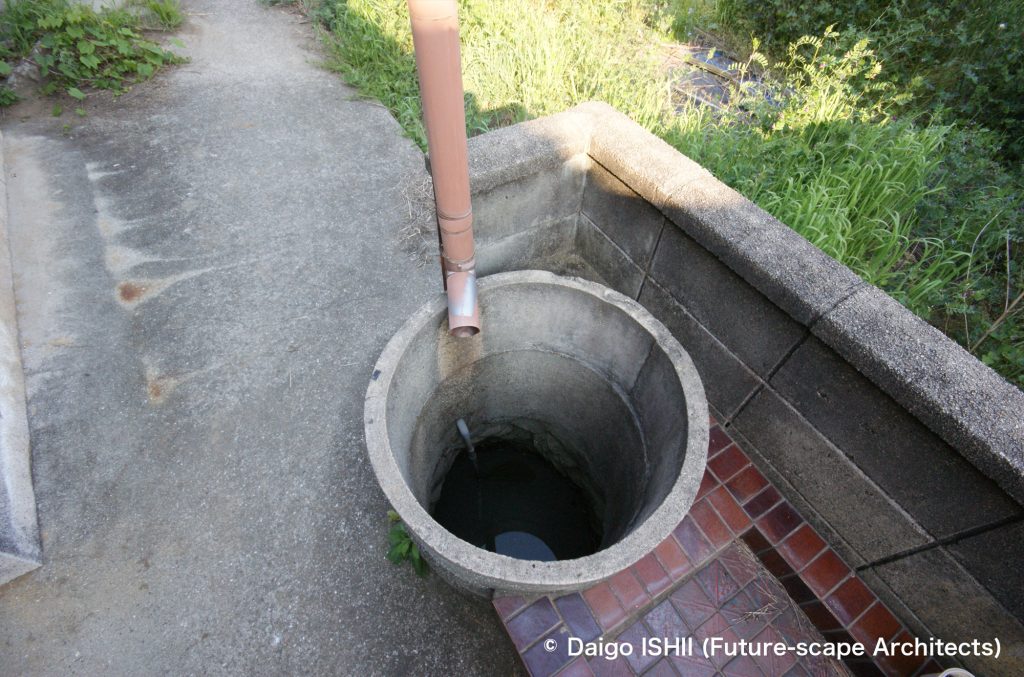
Se a rainwater well established in a private house. A rain gutter extends into the rainwater well.
現在の上水の中継槽 / newly-built relay tank for tap water
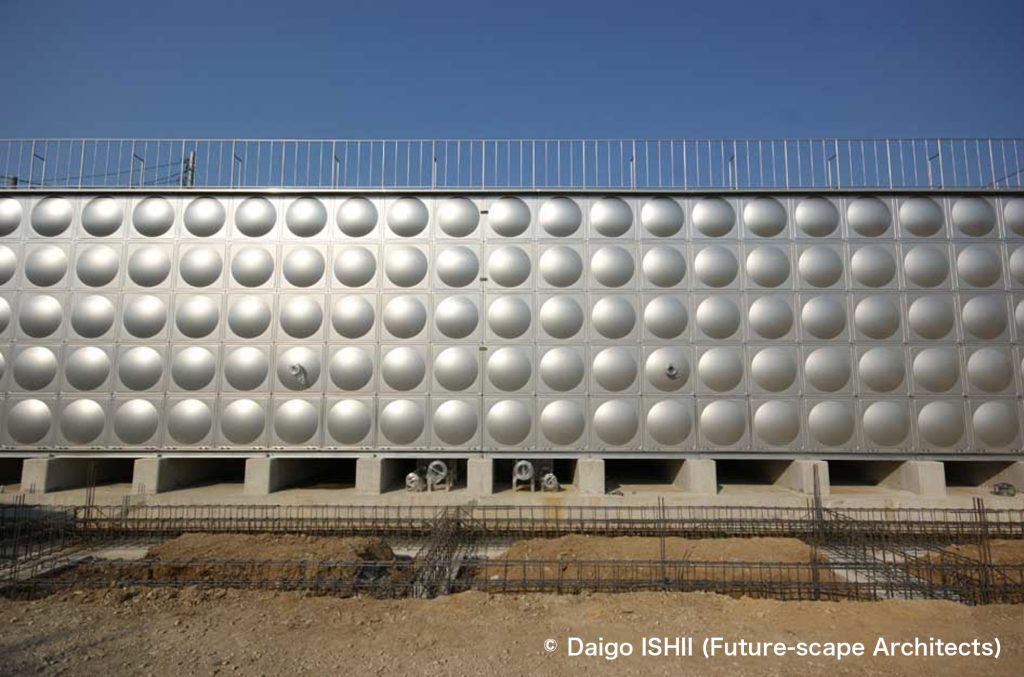
See the newly-built relay tank for tap water by submarine water supply.
https://goo.gl/maps/bMGNT3SmocHfUvWm7
トイレの家 / House of Toilet
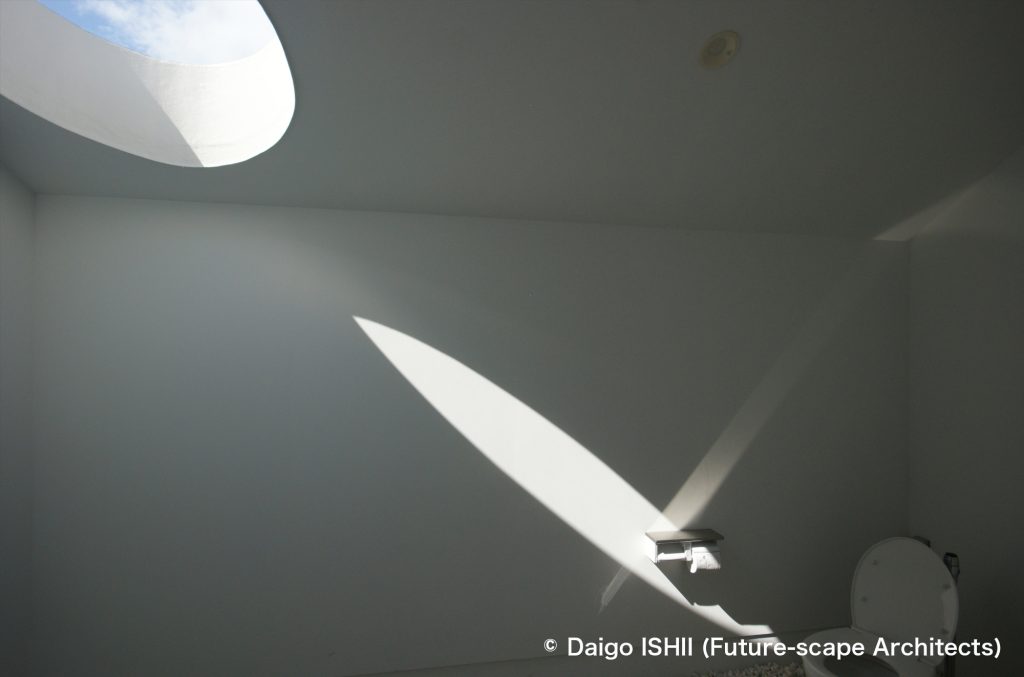
”House of Toilet", which I designed in Ibukijima Island in Art Setoutchi Triennial, has an opening on the ceiling in the room at the depth of the building. It is one of the various landscapes of the island that I superimposed on the architecture, and the image of looking up at the rainwater well from below. I intended to connect to the water story of the island in the deepest part of the facility related to water.
https://goo.gl/maps/KSdyokfCBsH7YY6q8

ご感想はこちらへ / Click here for your impressions
参考文献 / reference
"伊吹島の民俗 : 香川県観音寺市伊吹町 : 特集号"(香川民俗学会,1991)
伊吹島民俗資料館
写真の無断使用、転用はご遠慮下さい。/ Please do not use or upload our photos without permission.





